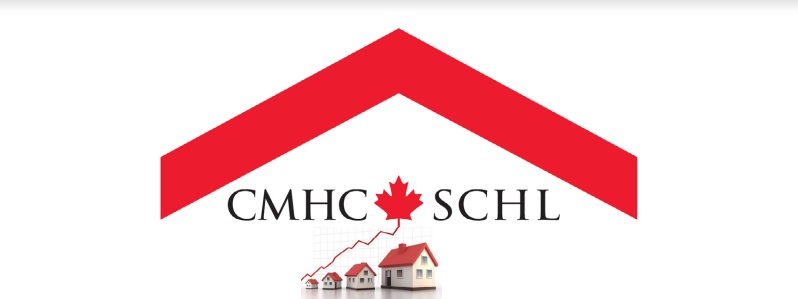Increasingly, Toronto Hydro Corporation poses an expensive risk to its customers and ratepayers, and indeed to all Toronto citizens. The century-old electricity distribution company’s aging equipment is breaking down, and the utility is having trouble keeping up with...
Crown Corporations
A Valuation of Toronto Hydro
Keeping Toronto Hydro or having an additional 15,000 teachers, nurses, or paramedics? This is a choice Toronto citizens may welcome if the asset were sold. There are two generally accepted methods for valuing a company: its intrinsic value as a cash-generating...
SaskPower: Paying The Way For Innovation
Summary SaskPower is a crown corporation established in 1929. With a staff strength of approximately 3200 permanent, full time employees, SaskPower supports growth and improvement of quality of life of nearly 528,000 customers spread across 652,000 square kilometres.1...
To Sell Off or Not To Sell Off CMHC?
Canadians are unaware of the increasing risk posed by Canadian Mortgage and Housing Corporation (CMHC). It is a dangerous business for the government to be involved in a corporation that monopolizes a significant part of Canada’s economy. Canadians are exposed to a...
Featured News
Celebrating Manitoba’s Fisher River First Nation
Indigenous communities in Manitoba face some of the greatest obstacles. Over the years, when the UN Human Development Index was applied to First Nation communities across Canada, Manitoba First Nations often ranked lowest. So, it’s important to highlight some of the...
UK-Canada Nuclear Fusion Project Could Generate Jobs, Unite Climate Alarmists and Skeptics
For a long time, nuclear fusion has been a sci-fi fantasy; the holy grail of energy production that involves the combination of multiple atomic nuclei to generate energy. It’s the same process used by the sun to create energy, and the opposite of nuclear fission,...
Alberta Treasury Branches – Still Relevant?
Dr. Frank Atkins, an econometrician and professor of Economics at the University of Calgary, spoke at a Frontier Centre event this week on the topic: “Alberta Treasury Branches – Still Relevant?” Here is a summary of Dr. Atkins’ message and some of the dialogue that followed. I invite you to view Dr. Atkin’s complete analysis published in the FCPP Policy Series.
The Alberta Treasury Branch was established by the Government of Alberta under Premier William Aberhart in 1938. The initial purpose of ATB was first and foremost to serve rural areas where no chartered bank or credit union existed. ATB was created because of the frustration among Albertans towards the central banks and in an effort to provide homegrown financing to small businesses in rural Alberta.
Since its creation, ATB has always competed with an advantage. For a long time, ATB did not pay deposit insurance and they did not pay income tax. Because ATB is supported by the provincial government, the government intervenes and ensures that ATB will remain in operation, despite numerous instances of ATB falling into negative equity. When the government guarantees ATB, this means that there are no effective capital controls, the institution assumes more risk than it can absorb, and we the taxpayers, who are shareholders in ATB, absorb these risks without receiving any return.
Nenshi Wants Taxi Study Launched: Mayor reacts to complaints
Less than two years after a wide-ranging review of Calgary’s taxi bylaw, Mayor Naheed Nenshi wants city council to launch a major study on how to reshape the city’s cab and limousine industry.
The Role of Alberta Treasury Branches in the Alberta Financial Market: The case for privatization has never been stronger
The Alberta Treasury Branches were established to provide financial services to Albertans at a time and in places that such services were often inaccessible and not provided by chartered banks. Now, ATB competes rather inefficiently with private sector financial institutions while enjoying may unfair advantages.
Media Release – The Role of Alberta Treasury Branches in the Alberta Financial Market
The Alberta Treasury Branches were established to provide financial services to Albertans at a time and in places that such services were often inaccessible and not provided by chartered banks. Now, ATB competes with private sector financial institutions while enjoying may unfair advantages.
The High Cost of Calgary’s Low-Cost Transit
Those figures conveniently ignore some pretty substantial light rail costs. For one thing, they count only capital costs from the first nine years of C-Train development, when the city spent $18 million per kilometer to build the initial phases. Those were the cheapest phases, of course, because they focused on the highest density routes, heavily centred around downtown—“the low hanging fruit.”
What to Do With MPI’s Surplus
MPI had an extra $250 million to return to vehicle owners.
I have a modest suggestion
Dispelling the Myths of the CTrain: After 30 years and $2 billion, the CTrain worsened Calgary’s automobile dependency
Though presented as an inexpensive and efficient form of mass public transportation, the Calgary LRT has done little to curb automobile usage or contain the urban sprawl after 30 years and $2 billion.
30 Years of the C-Train: A Rejoinder
I've spent a good chunk of the last few months working on a study of Calgary's light rail transit (C-Train) system, which was released today by the Frontier Centre for Public Policy. I've had a long standing interest in LRT systems, and spent the summer of 2009...
Media Release – The 30th Anniversary of the C-Train: A Critical Analysis of Calgary’s Light Rail Transit System
The costs of LRT are understated while its benefits are overstated. LRT is often thought of as a happy medium between buses and trains. In reality, it combines their disadvantages. Light rail transit is slow, inflexible, and expensive



